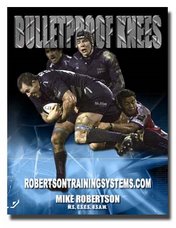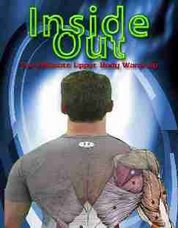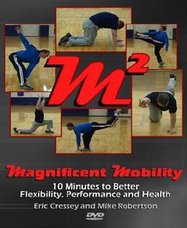The question comes up all the time: Do you need direct and/or isolated “core” training? Or do big bang exercises like squats, deadlifts, and overhead presses take care of this for you?
I hear this debated ALL the time – and for some reason, I think I have at least a relatively good answer as to how BOTH camps could be correct.
Let’s examine the first group, the ones who say you have to perform isolated and/or direct core training. Why would this be necessary?
You’ve heard me talk ad nauseam about core training and why it’s important; quite simply, we want to achieve and maintain optimal spinal/pelvic alignment both statically and dynamically. By doing this, we give our body the best chance to be efficient. With optimal pelvic/low back alignment, we can really turn on and utilize our glutes and hamstrings, the workhorses when it comes to big squats and deadlifts, fast sprints, and sky-high jumps.
So if you’re NOT in optimal low back/pelvic alignment, heavy squatting and deadlifting is only going to reinforce that flawed stability program. You’re going to be relying on your low back to do all the stabilizing, effectively reinforcing your already flawed spinal/pelvic alignment! This person is the ideal candidate for isolated and direct core training. They need to bring the rectus abdominus and external obliques up to appropriate levels of strength and stiffness, such that optimal pelvic alignment is achieved both statically and dynamically.
On the other hand, the “I don’t need isolated core training” group could be correct as well. How?
Quite often I hear this from lifters who have been taught to lift correctly!. They were taught to squat deep from the start. They started off training without belts for an extended period of time. One of the groups I hear this from the most is Olympic lifters. If you’ve ever worked with or watched high-level weightlifters, they generally have amazing posture: Great spinal/pelvic alignment, good thoracic mobility/extensibility, etc Basically, they are already in a near-optimal alignment, without necessarily training for it! So how could these people get away without direct core training?
They are already in optimal alignment (or close to it), and therefore their body is constantly reinforcing this optimal alignement via training. Let me expand a little further.
Let’s say our first example decides he doesn’t need isolated core training, so he takes his flawed stability patterns (e.g. all low back), and proceeds to squat and deadlift heavy. He’s already in a flawed posture, and the weight training is going to constantly reinforce and engrain that movement/posture. So while it may not catch up to him immediately, over time if he doesn’t change his ways he’s going to end up with any of an assortment of injuries.
Now let’s go back to our weightlifter. He’s already in an ideal alignment, so when he squats or deadlifts heavy, his body is going to be reinforcing that optimal alignment. Due to his core strength/stability already being on par with what his legs and hips can handle, he’s bringing up the entire body’s strength at the same time. Essentially, his entire core can stabilize whatever his legs are capable of moving. This is the perfect situation to be in.
As I’ve stated before, weight training always cements your posture. So if you’re doing it properly and through a full range of motion, it will improve your posture and your mobility! If you don’t do it correctly, or do it through an incomplete range of motion, this too will be reinforced.
To bring this to a close, just remember this – if you’re not in optimal spinal/pelvic alignment at rest, you’re not going to do it while producing movement. Period. You need to perform isolated and/or direct core strength/stability drills to achieve this first and foremost.
If you’re already in an optimal spinal/pelvic alignment, you may not need direct core work, but it probably won’t hurt.
Hopefully this sheds a little light on the topic. Best of luck with your training!
Stay strong
MR
High Octane Corrective Exercise and Performance Enhancement | www.RobertsonTrainingSystems.com
Subscribe to:
Post Comments (Atom)









No comments:
Post a Comment